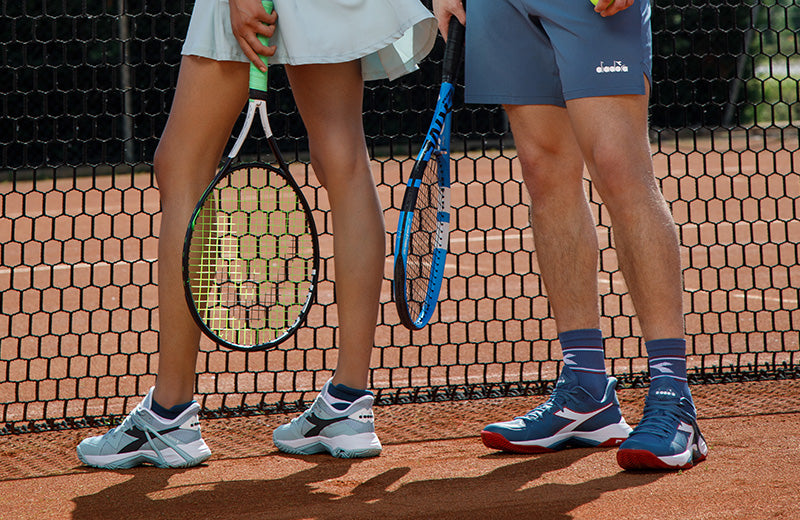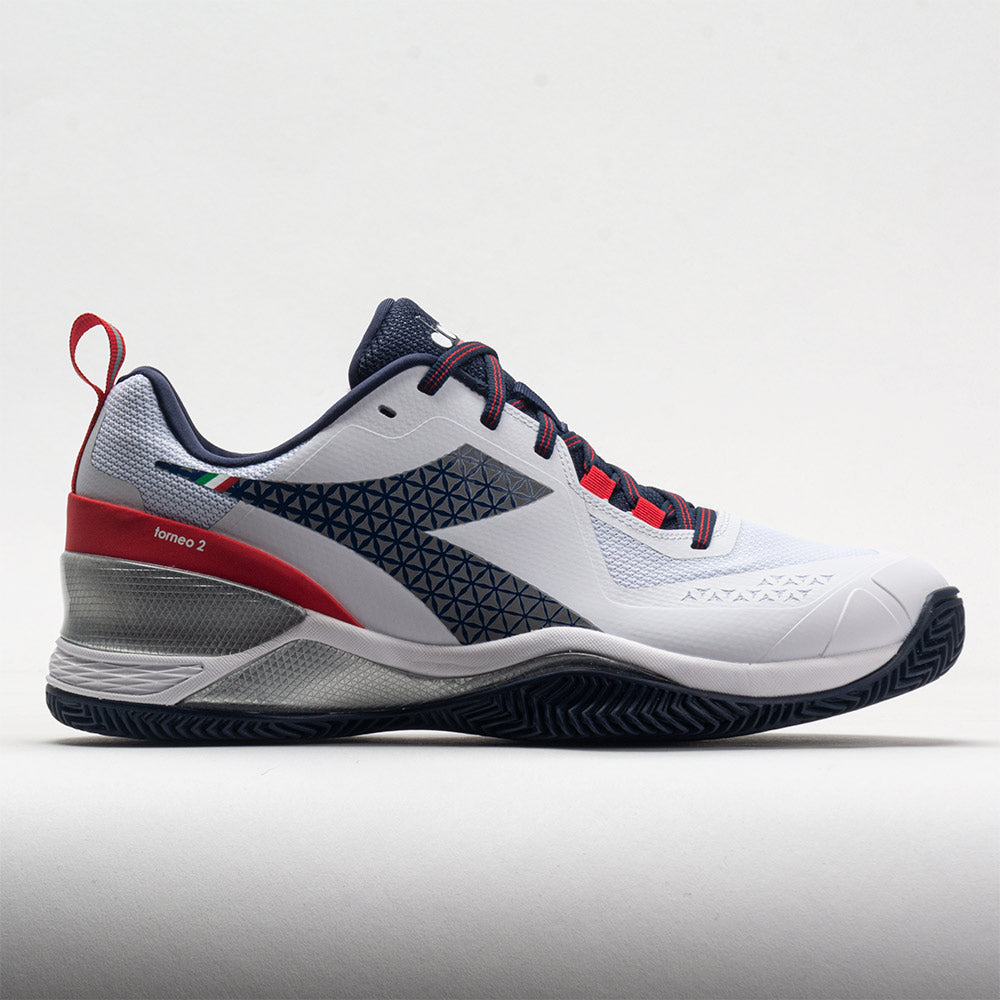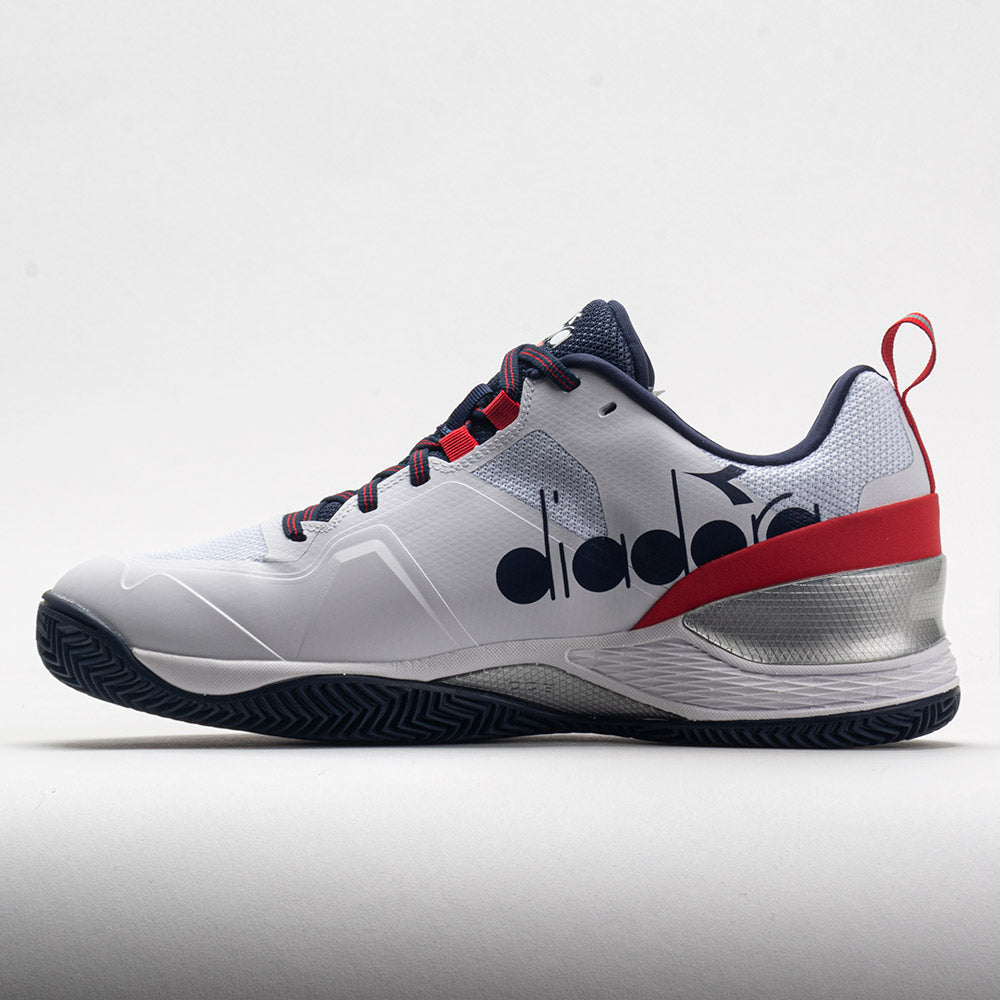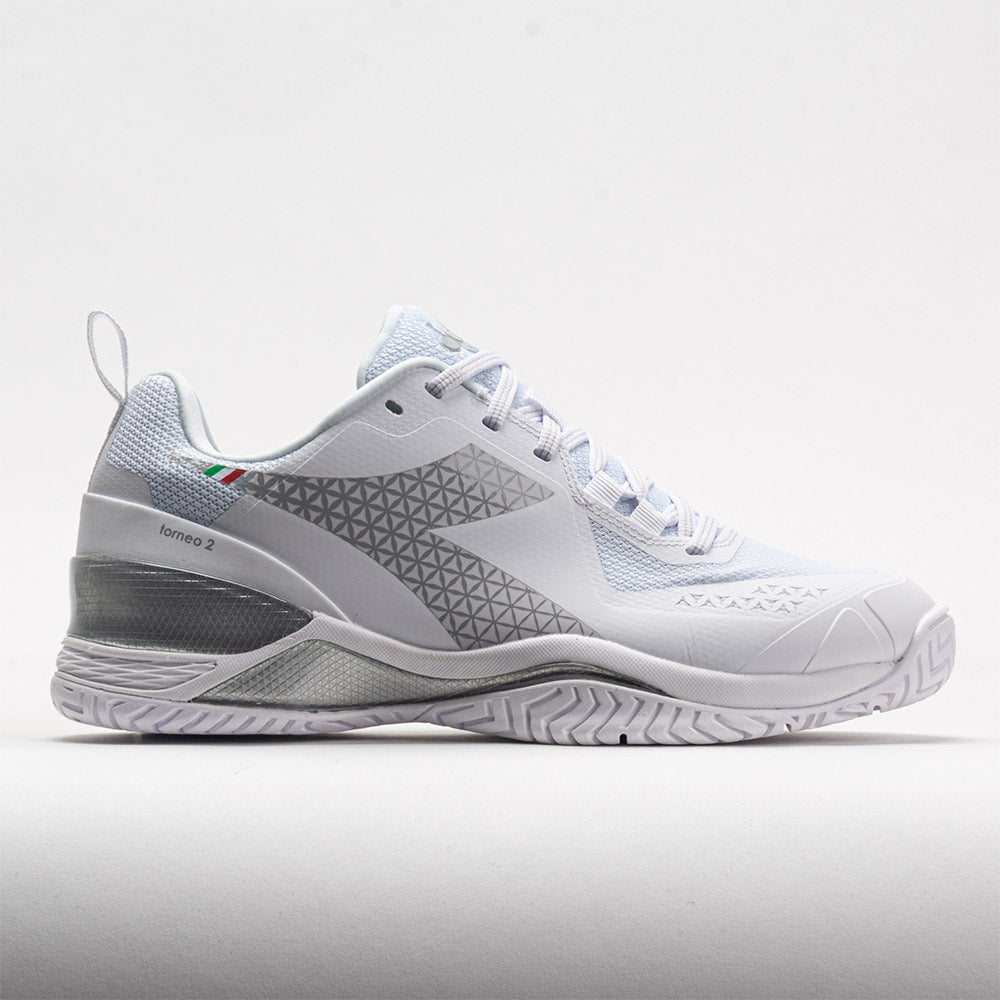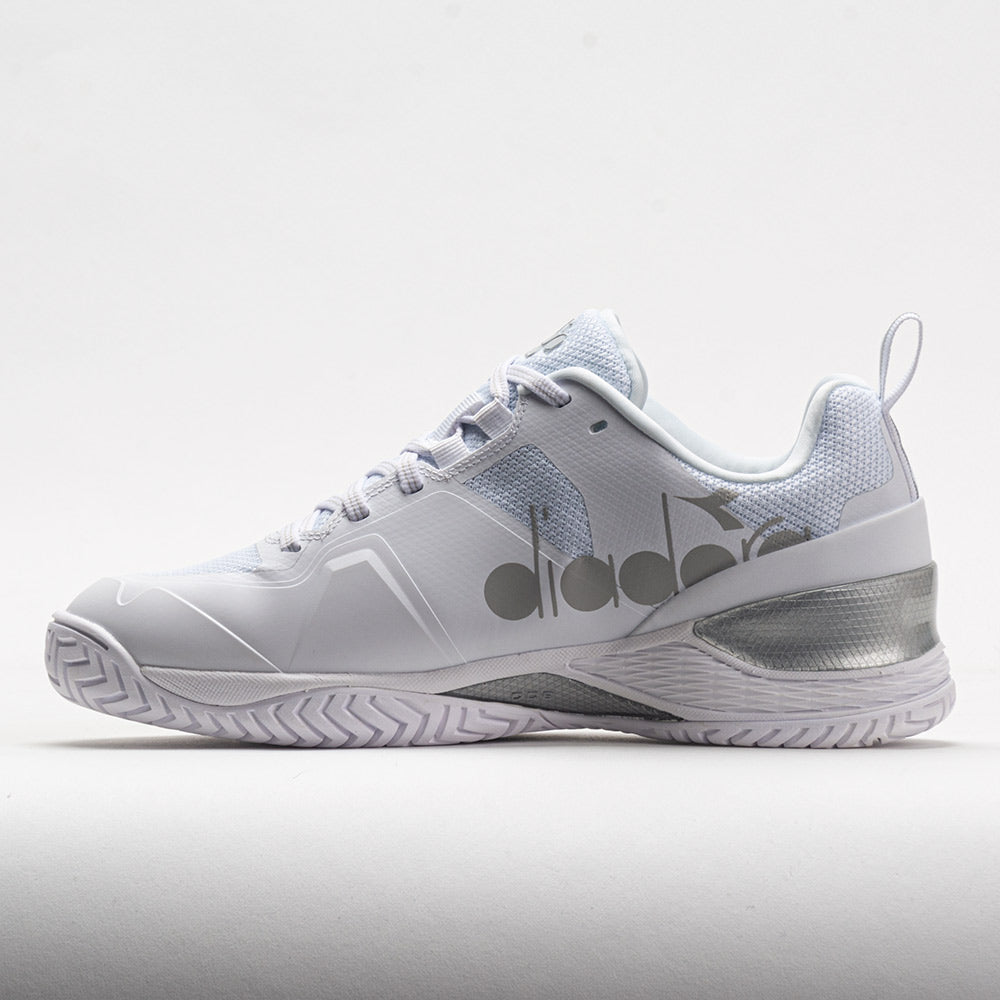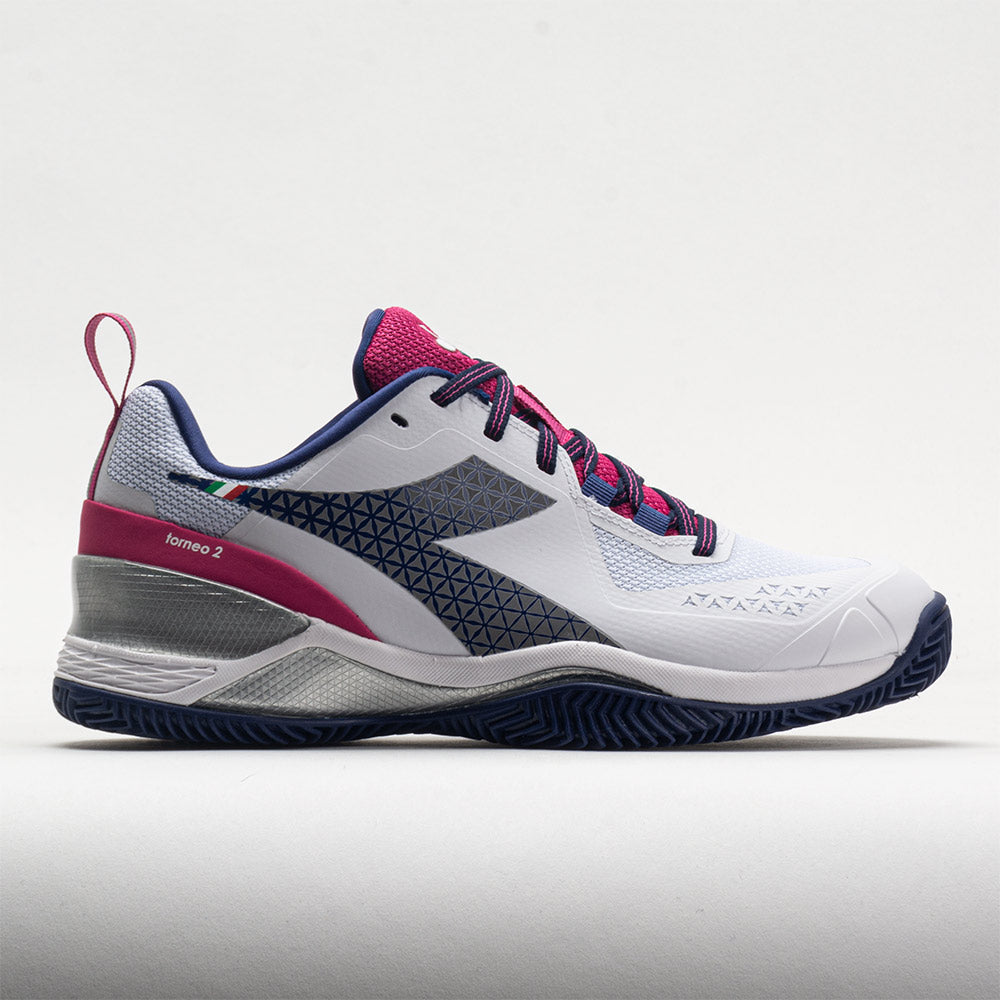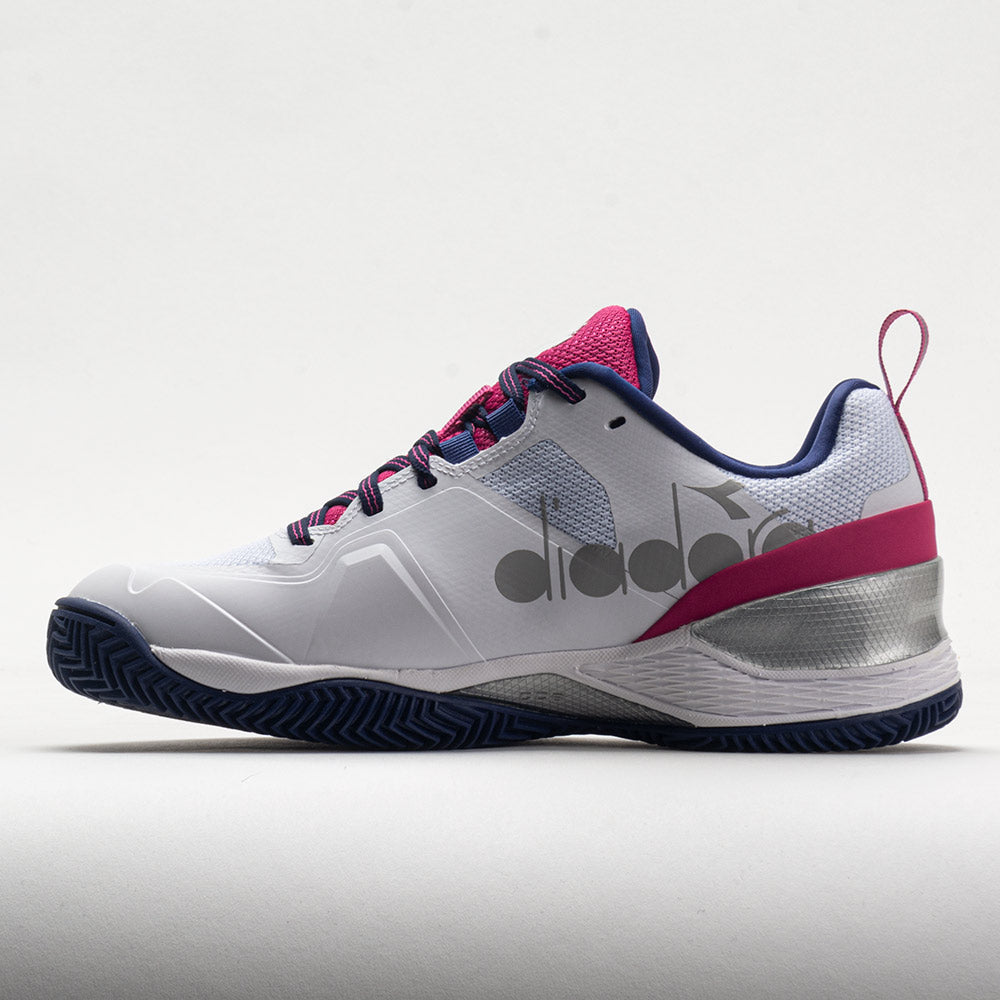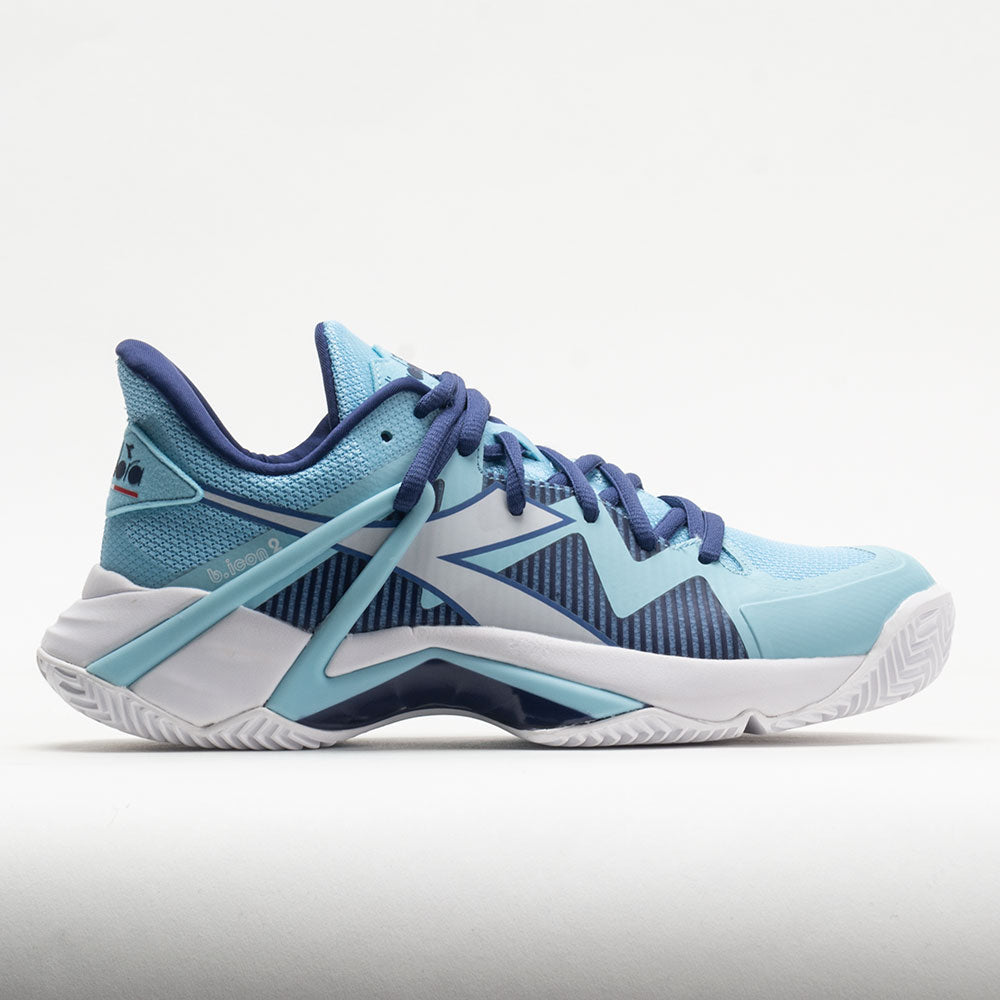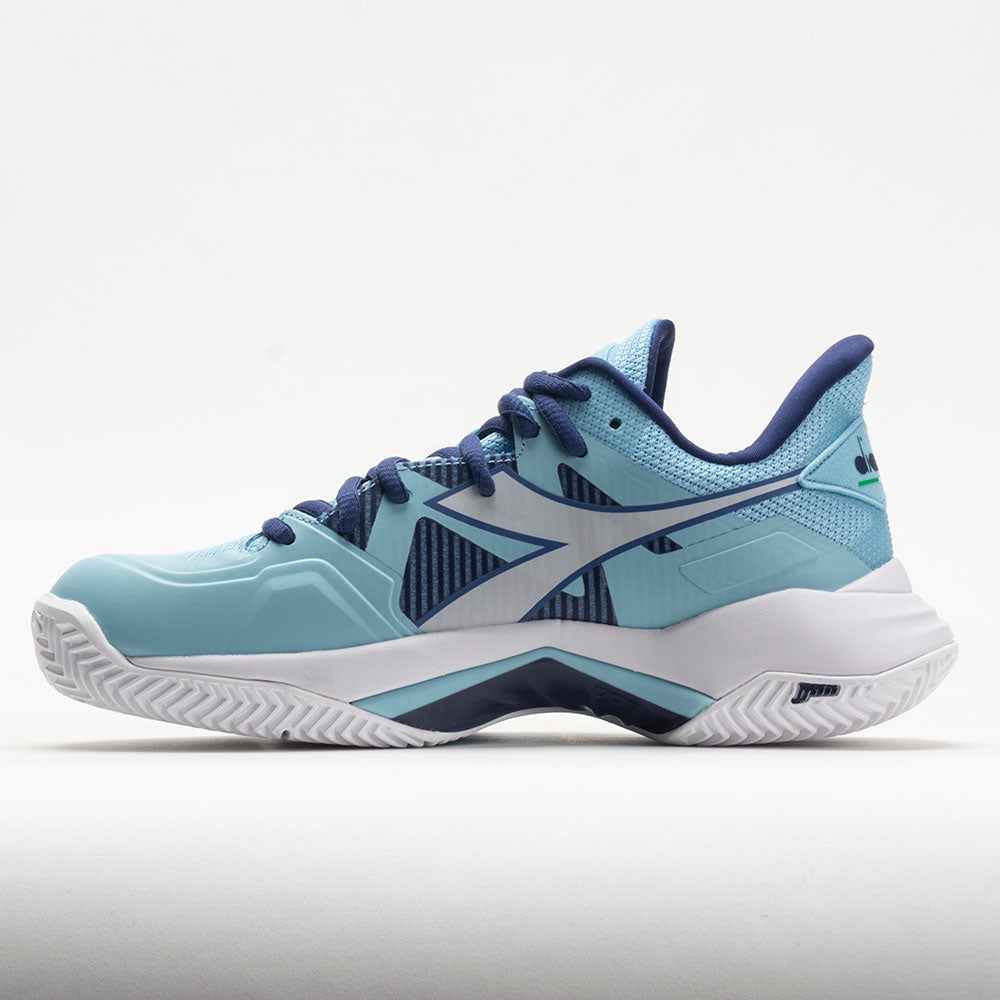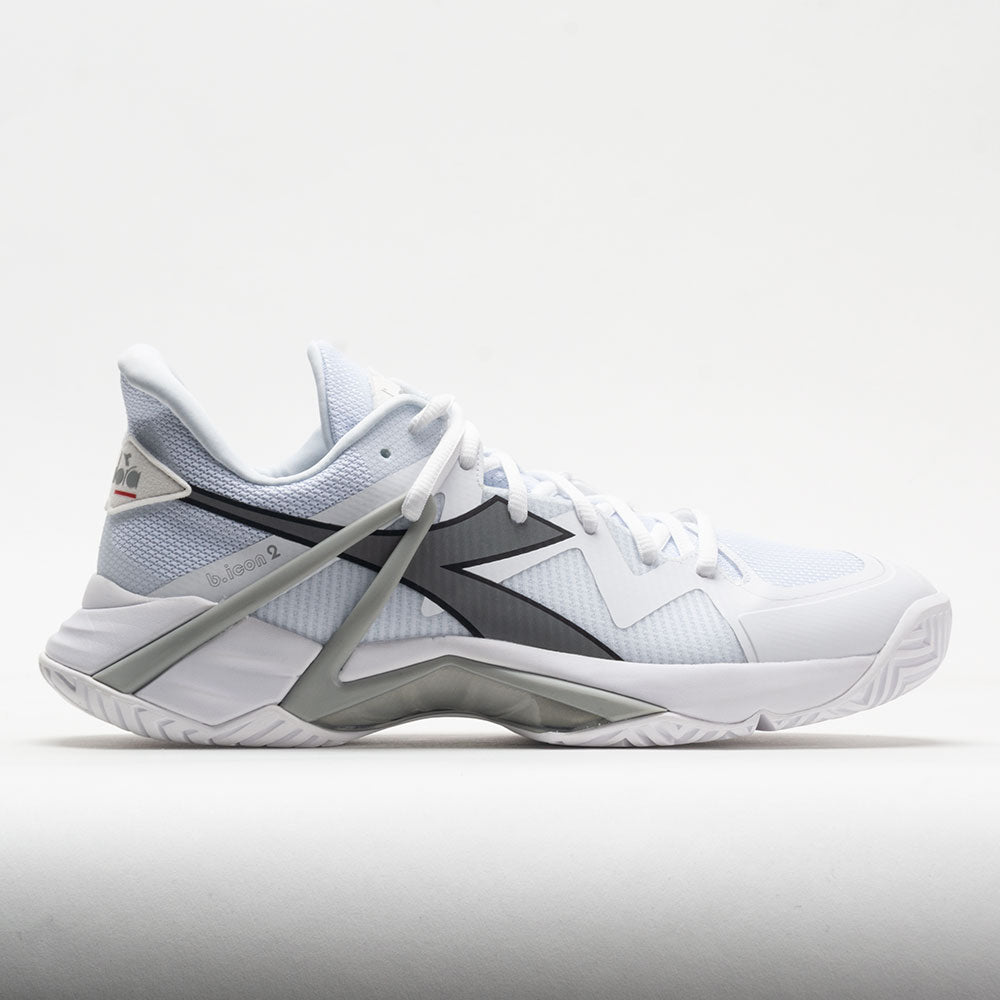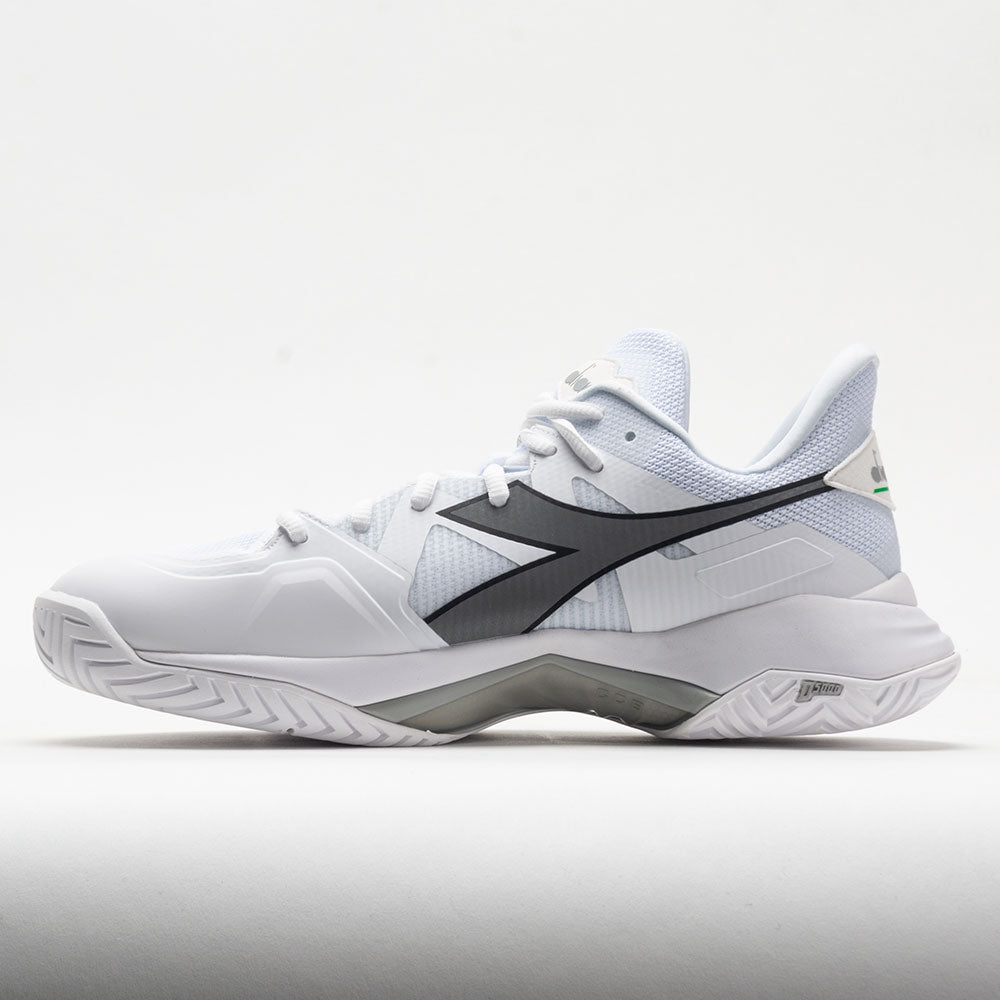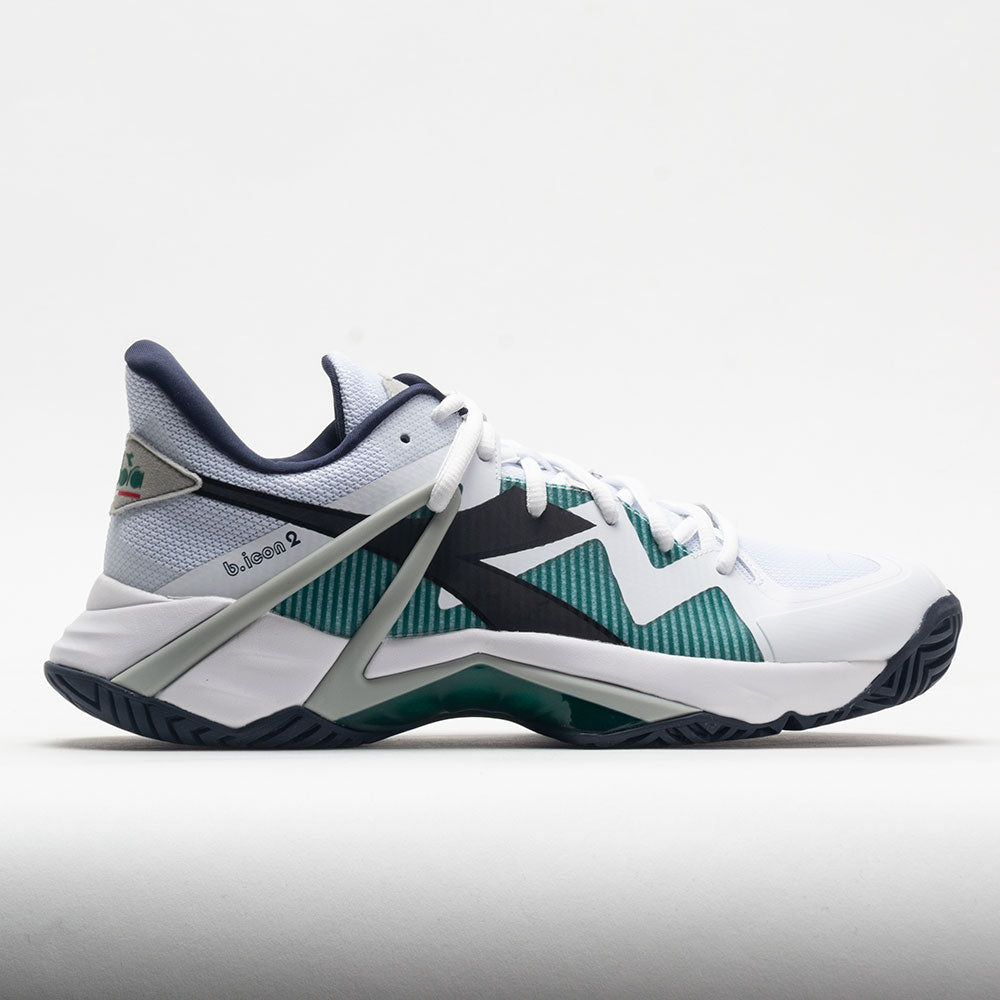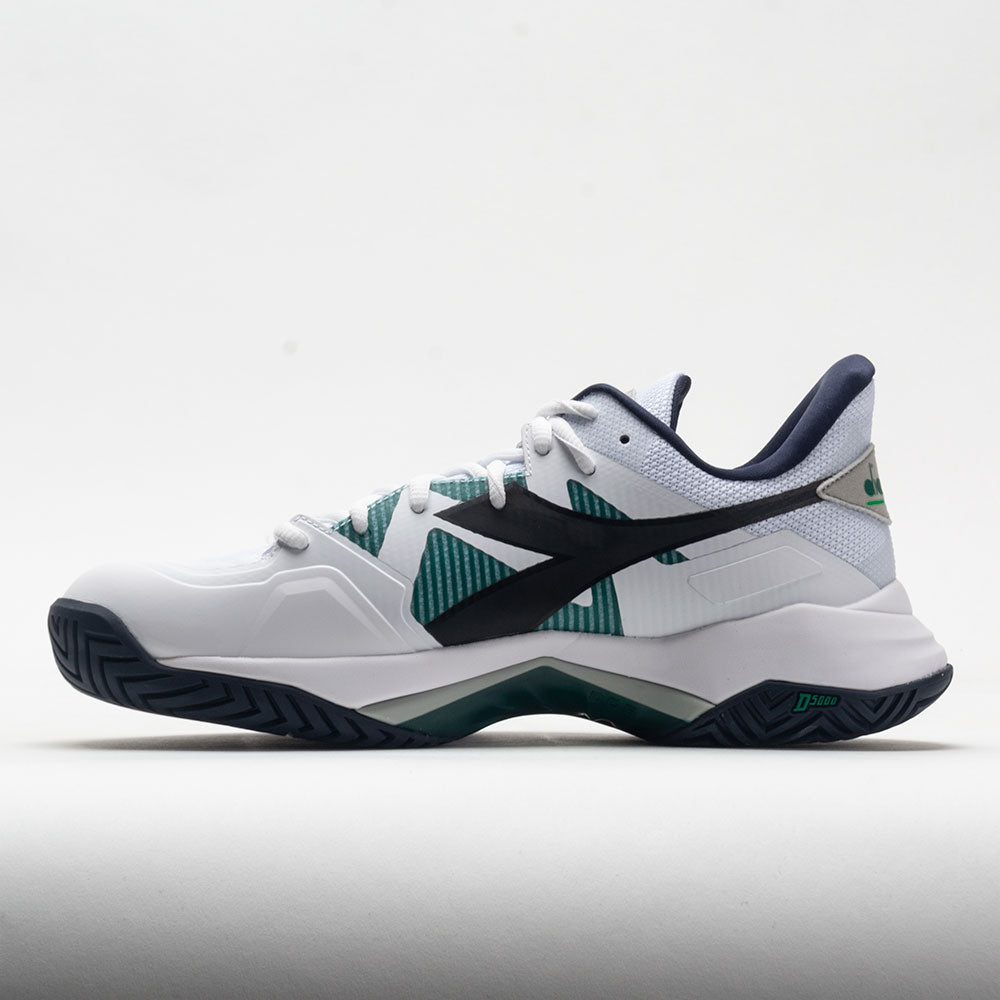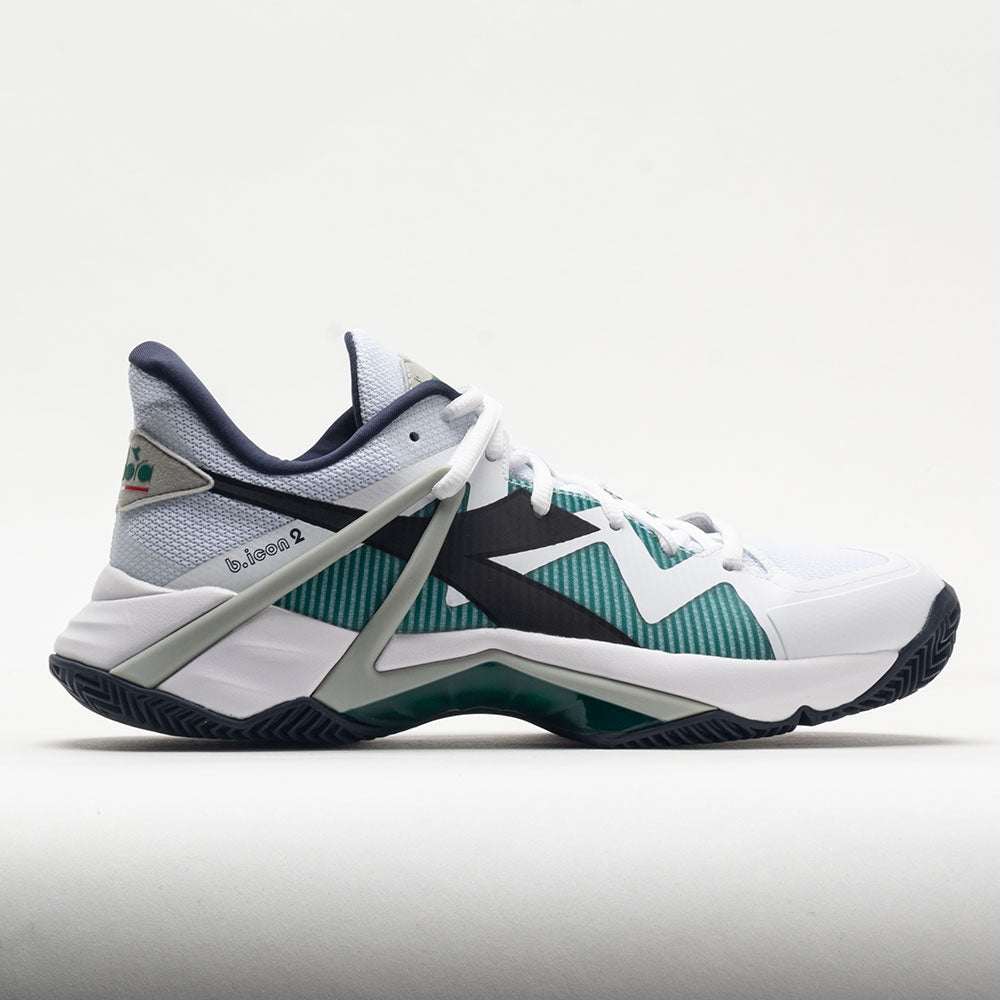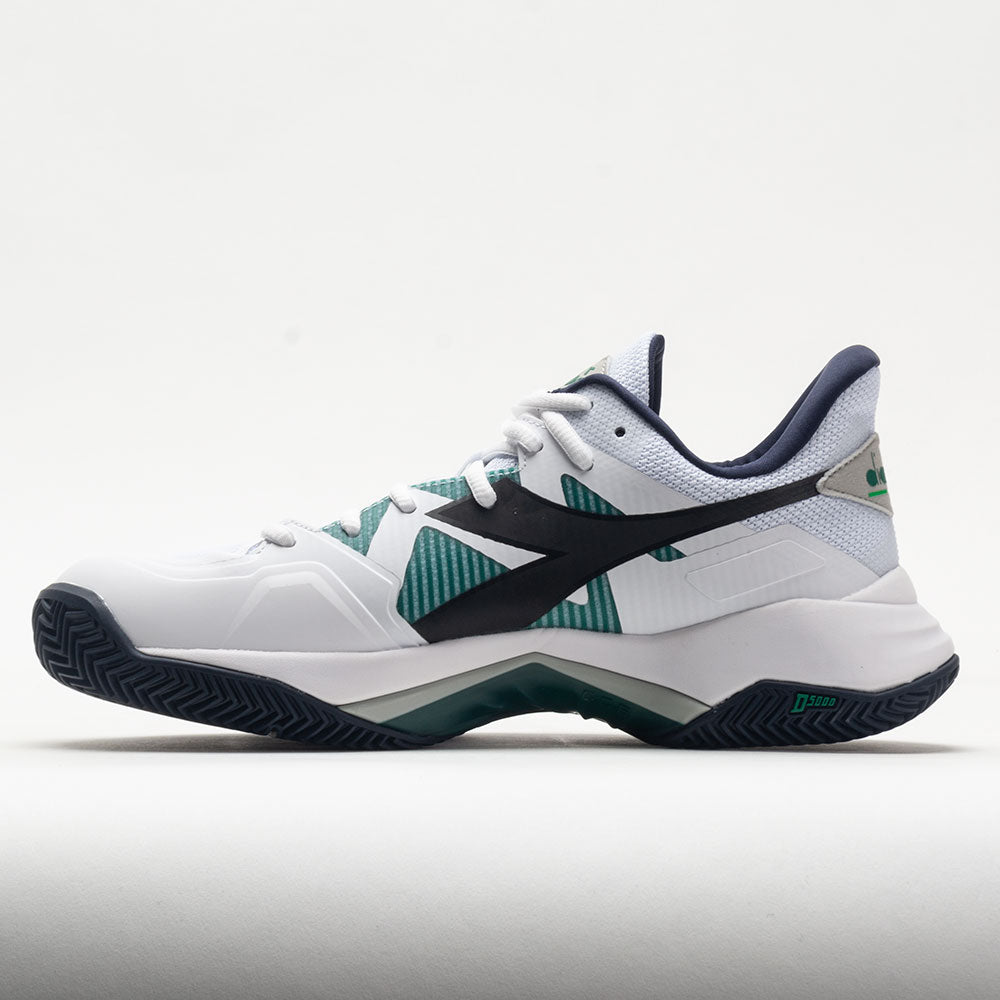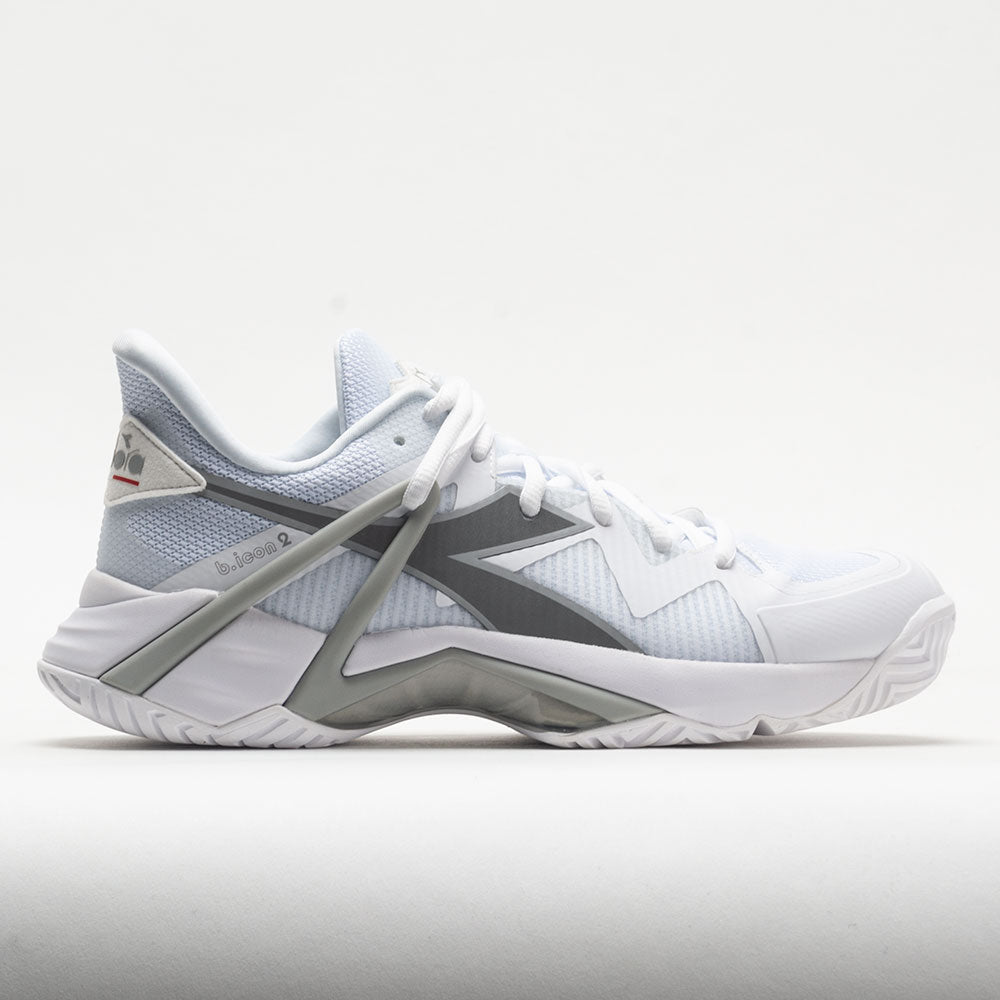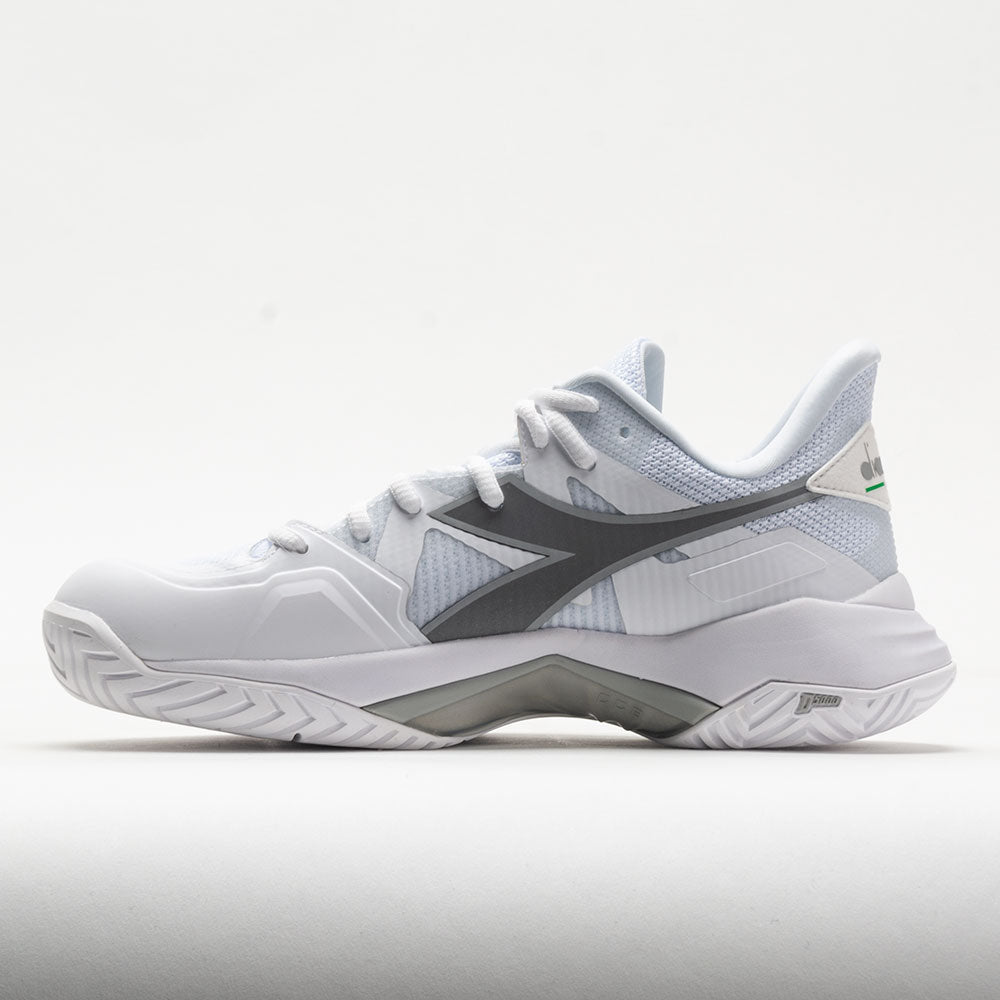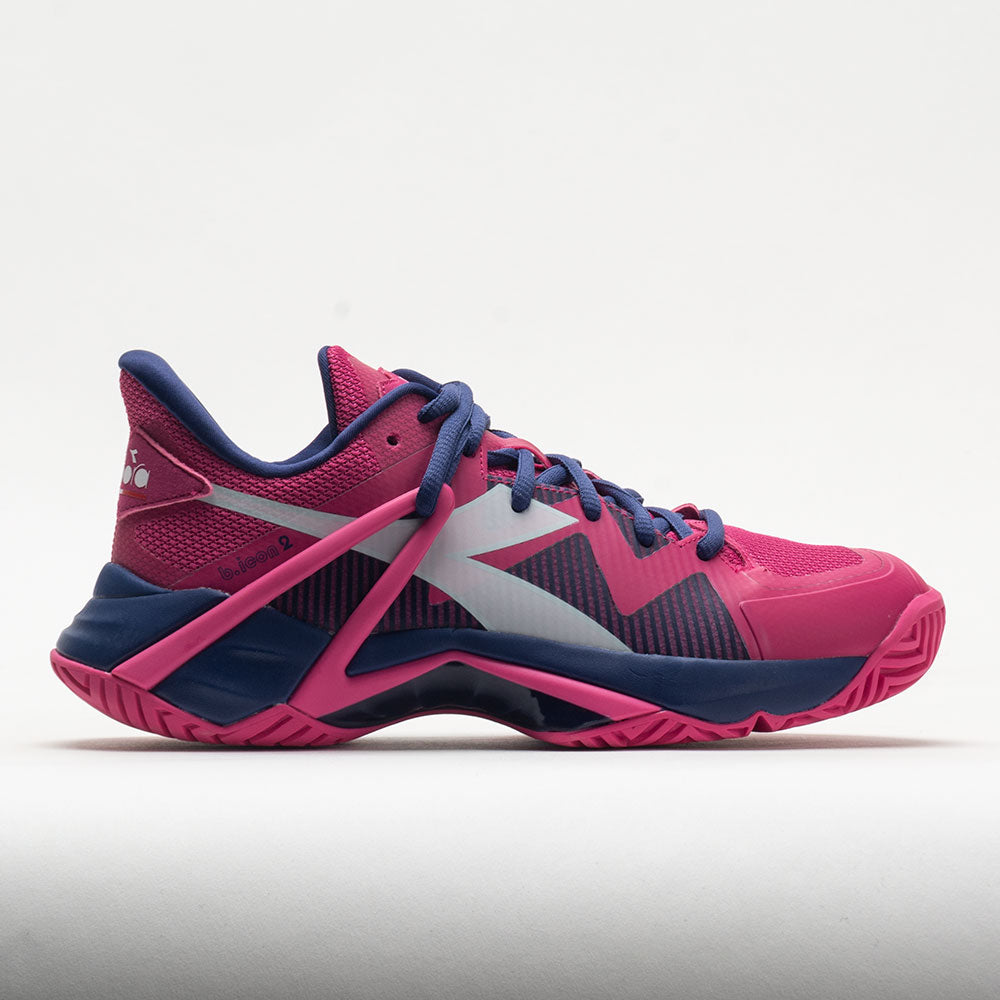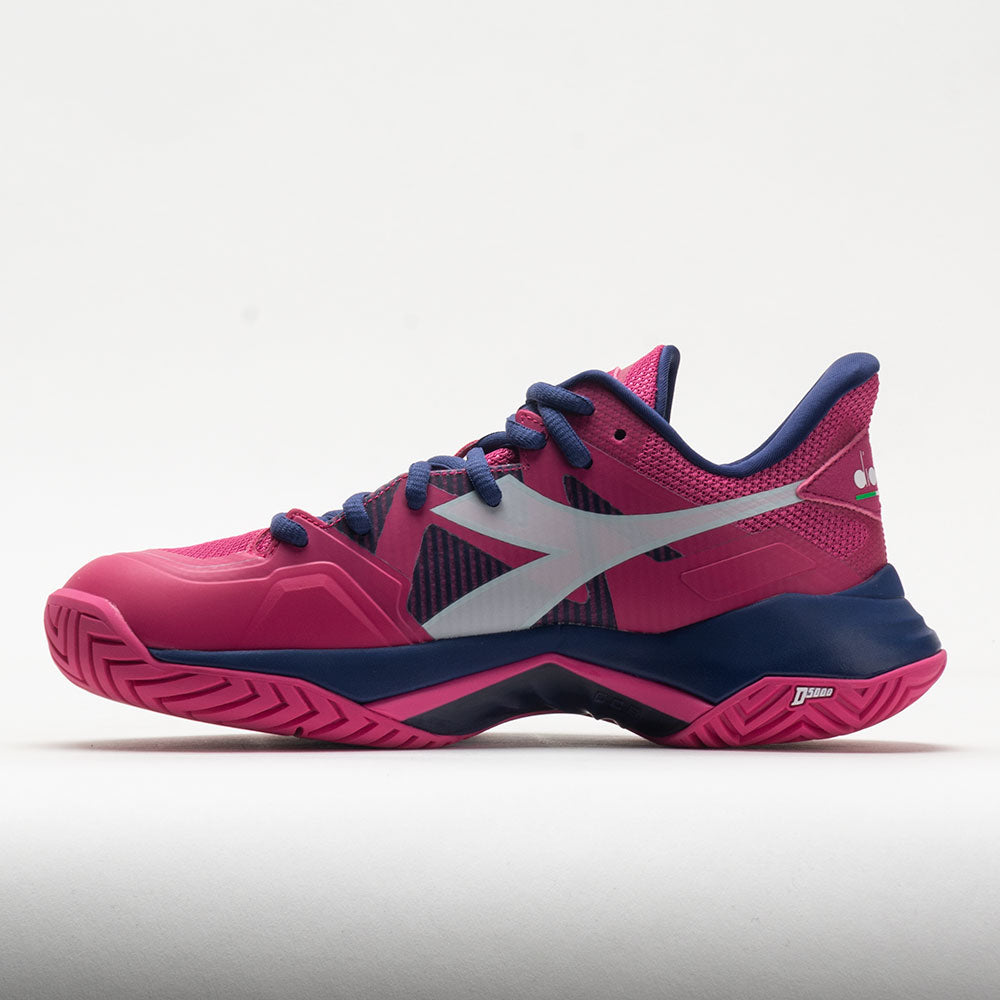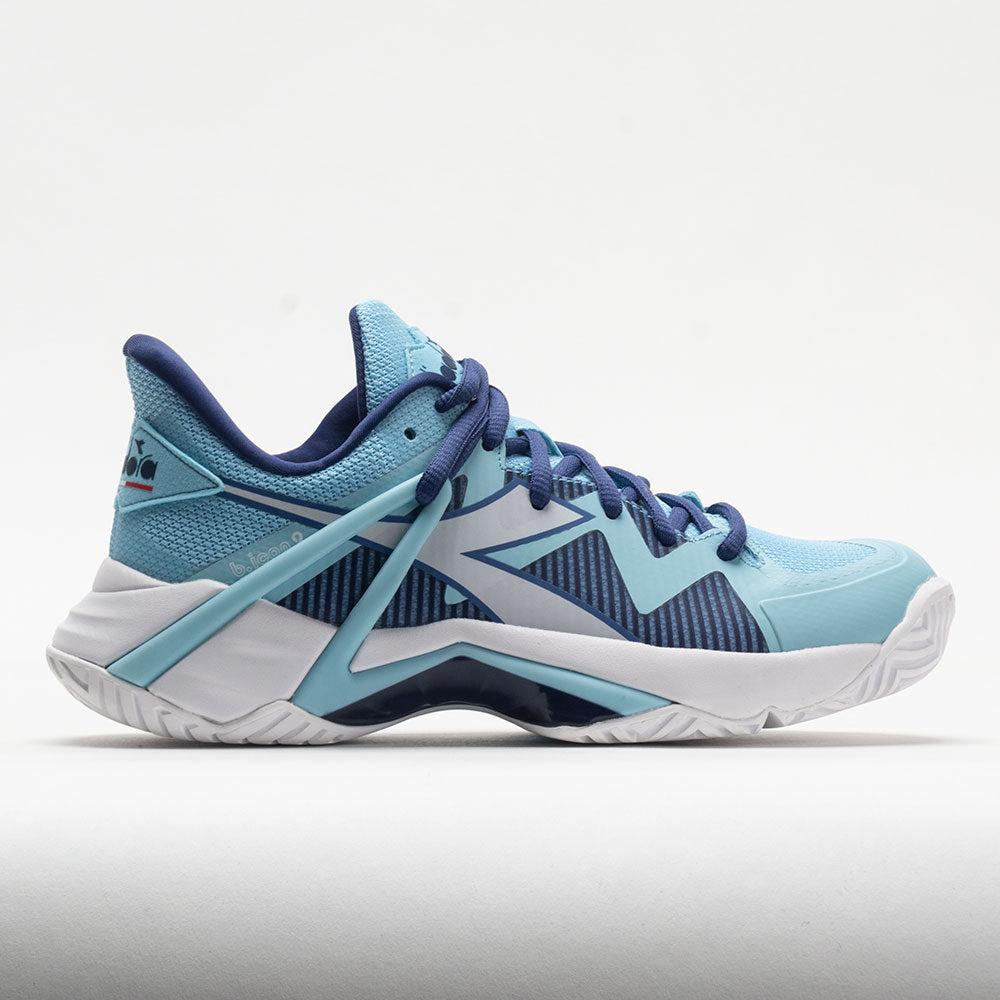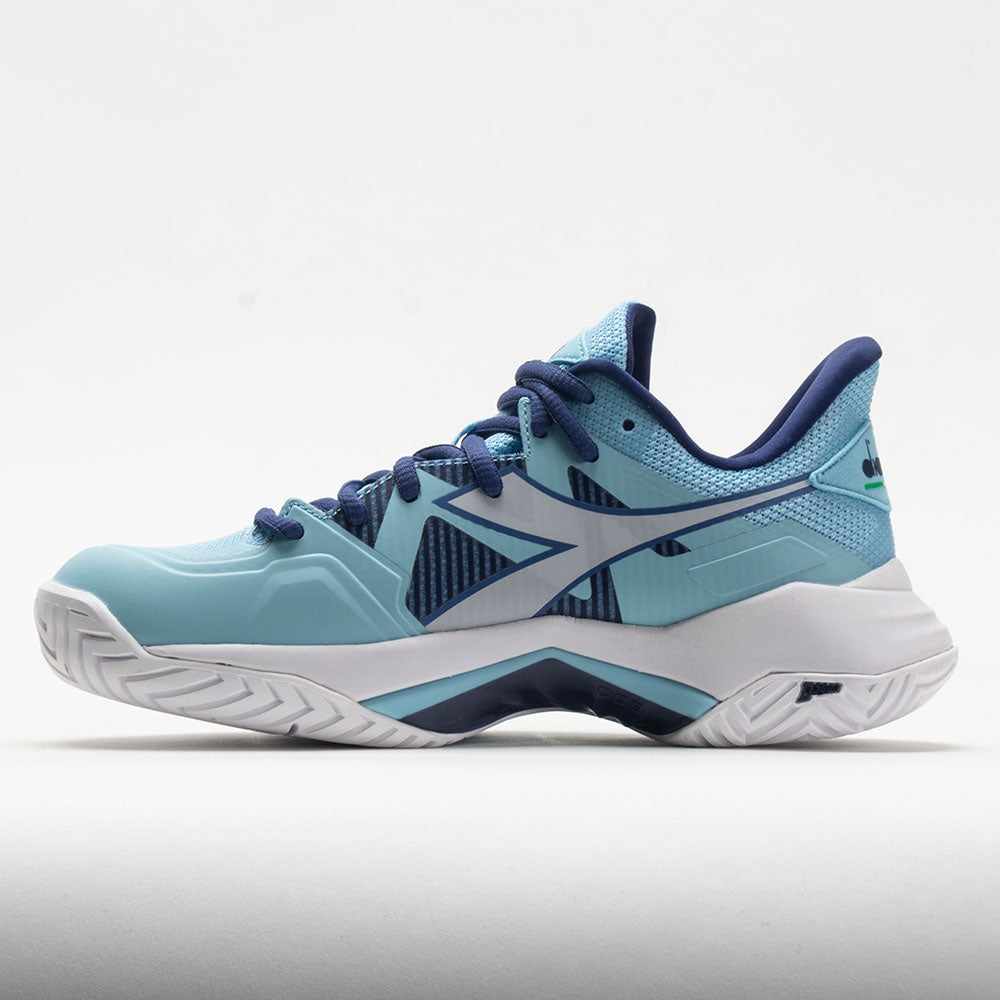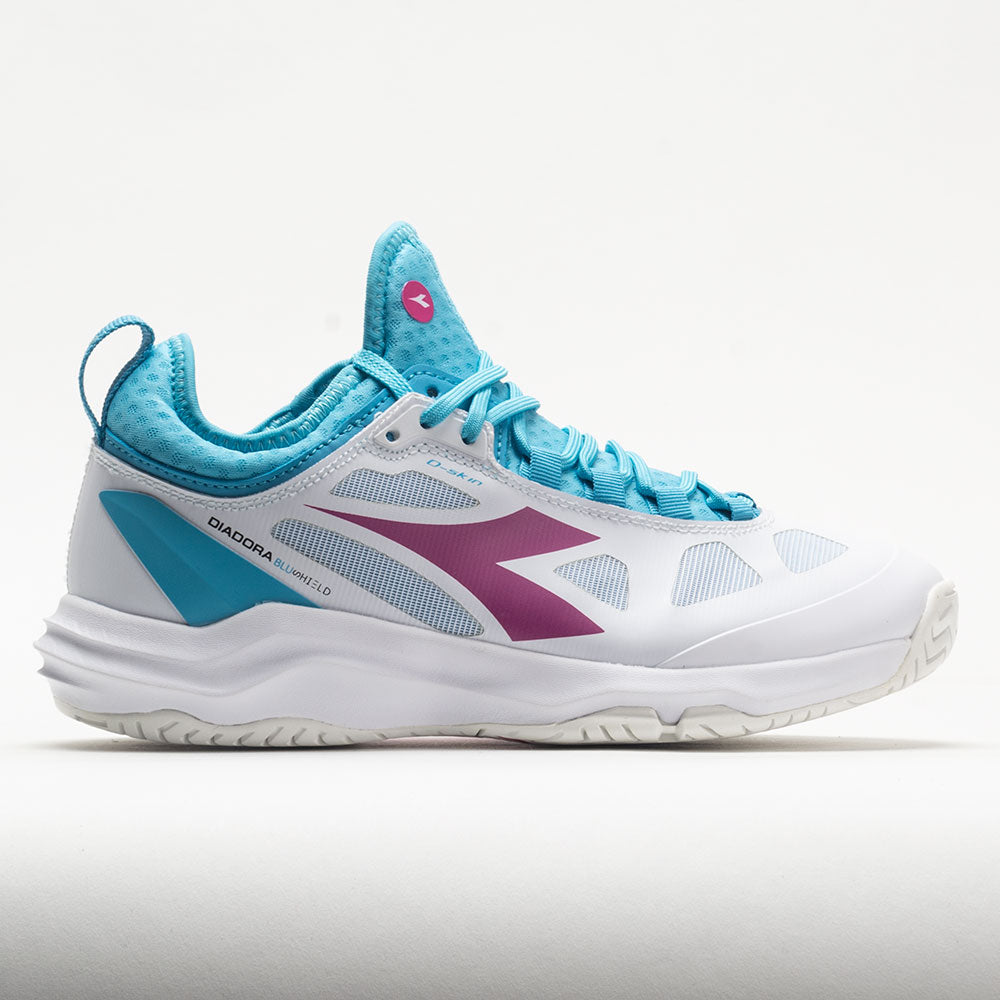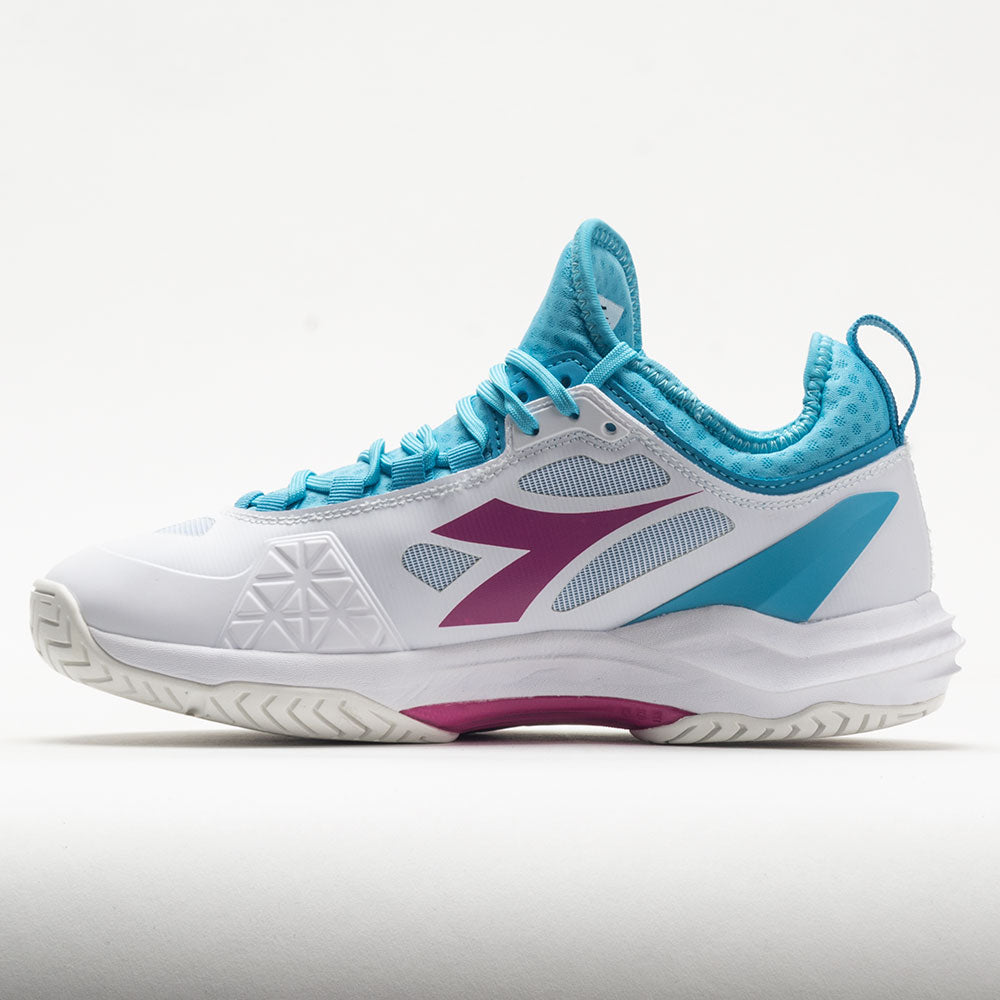Diadora was born out of a passion for Italian craftsmanship. The company name roughly translates to “sharing gifts and honors” and their shoe designs illustrate how much they care about their work. Whether you’re an aggressive player or a baseline player. Whether you prefer a clay court or indoor. Whether you prefer stability or a light flexible tennis shoe. Diadora has a shoe for you.
How Diadora tennis shoe technology improves your performance
Diadora’s Speed Blushield Fly 2 – Top-shelf comfort shoe
The Fly 2 is Diadora’s flagship tennis shoe. This shoe was designed with foot comfort in mind, and it shows. It has a padded upper and a noticeably plush midsole compared to other models.
The stability tech is there, though it’s not at the premium level. This shoe is perfect for intermediate players, though it might not be the best fit if you’re looking for a ton of stability to support your aggressive lateral movements.
What you’ll notice:
- High & fluffy.
Some players like to feel the court in each step, which you definitely won’t get in the Fly 2. For those who prefer padding between them and the ground, the cushioning in this shoe makes you feel like you’re sitting high off the court. If you like that high, cushy feel, you’ll enjoy the Fly 2.
- Hugs your feet.
One “complaint” some people make about the Fly 2 is how challenging it can be to put this shoe on. However, those same people say that once it’s on, it feels amazing. It has a good, tight fit around the ankle, and while the toe box is a little wide, this shoe clings to your foot no matter what type of movements you’re making.
Diadora’s Speed Competition 5 – A light shoe with ridiculous grip
This is meant to be a lightweight shoe that still has plenty of support for rapid movements. Even though the Competition 5 has a wider fit than the previous model, your foot still feels locked in and secure.
But what probably stands out most about this model is the sticky tread. In fact, if you’re an aggressive player who likes sliding into your shots, you’ll find that almost impossible to do in this shoe because they grip the ground so well.
What you’ll notice:
- Sticky, squeaky tread.
If you’re into setting up shots and making smaller cuts across the court, the traction on this shoe is so grippy that you’ll notice a sticking-to-the-court feel. Though you won’t be able to slide into shots with this shoe, when you aim to stop, make no mistake, you will stop.
- Low-court feel.
While it does take an hour or so for this shoe to embrace your foot, once it does, you sink into the cushioning and can truly feel the court. This feeling goes hand-in-hand with the sticky tread feeling the Competition 5 offers.
Speed Blushield 4 – Premium stability & durability
If you want extra protection for abrupt lateral movements, and also the ability to slide into your shots, look no further than the Blushield 4. This shoe was built thick for protection, and to handle a beating on the court. But it was also designed to be nice and slick for aggressive players who love to slide.
The one tradeoff is that the Blushield 4 feels a little bulky compared to other models, weighing in at a solid 15.5 ounces for a men’s size 9.5. Though for all it’s thickness, it’s still quite breathable in the upper. In fact, if you’ve got narrow feet, you may need to wear an extra pair of socks, and tie-up all the eyelids to fill in this shoe.
What you’ll notice:
- Premium stability & durability.
If you appreciate the feel of solid support for pivots and hard turns, you’ll love the Blushield 4.
One thing to note: this shoe does run wide, especially in the forefoot, so for those with narrow feet, just know that you’ll probably need to tie your laces tight to get locked in.
- Slick.
If you’re an aggressive player who can’t stand waiting for the ball to come to you, you’ll really appreciate this shoe’s ability to slide. This shoe’s tread will not trip you up. The Blushield 4 lets you anticipate your shots, and slide into them with ease.
How do I choose the best Diadora tennis shoe for me?
To find the ideal tennis shoe for you, you’ll need to ask yourself a few questions:
- First, what kind of tennis player are you?
- Next, which type of court do you prefer playing on?
- Which do you prefer: a stabilizing shoe to protect your feet, or an agile shoe so you can move about more freely? Or are you just looking for comfort?
First, what kind of tennis player are you?
- Are you an aggressive player? – Aggressive players like to anticipate where the ball will be and meet it there. This often means setting up your shots and sliding into position. If this is you, then you’ll want a tennis shoe that allows for good sliding, and that can take a beating without wearing thin, like the Blushield 4.
- Are you a baseline player? – Baseline players usually hang towards the back end of the court, allowing the shots to come to them. Most of their movements will be lateral side-to-side. If this sounds like you, you’ll want a light and grippy tennis shoe like the Competition 5.
Next, which type of court do you prefer playing on?
- All court – If you prefer indoor courts or standard outdoor courts, most of Diadora’s tennis shoe lineup is built for you. The cushiony Fly 2, the lighter and grippier Competition 5, or for the aggressive player who likes to slide into shots, the Blushield 4.
- Clay court – Because of how a clay court affects the ball’s movement and how it bounces, as well as your ability to respond to it, you need a specially designed clay court tennis shoe. The more robust Blushield 4 Clay, the lighter Competition 5+ Clay, or the soft and padded Fly 2+ Clay.
Which do you prefer: a stable and durable shoe, or a light, agile shoe so you can move about more freely?
- Stable & durable – Some players like a solid shoe to not only protect their feet, but also to protect their shoe from getting worn out. If this sounds like you, then you’d probably like a tennis shoe that can handle a beating and also keep your foot safe, like the Speed Star K Duratech AG. The shoe is made from full-grain, water-resistant leather, to keep your feet dry, and prevent your shoes from getting scuffed or scratched.
- Light & breathable – Some players just want their shoe to stay out of their way so they can blast all around the court, while still allowing their feet to breath. If you’re this type of player, then you should look into the Speed Challenge 3 AG. This is a light & speedy shoe, with a breathable upper, weighing in at just over 10 ounces.
- Comfort over anything – Or if your main concern is just having a cushy shoe that keeps your feet comfortable, then the popular Fly 2 is probably the shoe you’re looking for. It has the stabilizing tech, though not as much as some other models. But make no mistake, your feet will feel good in this shoe.
Frequently Asked Questions
Can I play tennis in Diadora running shoes?
Lots of Diadora fans are both avid runners and tennis players, so it may seem natural to use one pair of shoes for both activities. However, running shoes aren’t built with the stabilizing technology for the side-to-side movement you need when playing tennis. And depending on the model, tennis shoes can have dynamic outsoles so that players can slide into their shots – not a feature you’d want in a running shoe.
That being said, if you were forced to choose only one shoe for both activities, then most tennis shoes would likely be okay to use for a typical run.
Note: Just know that tennis shoes are usually pretty heavy compared to running shoes, so they may weigh you down and drain your energy faster.
What if I don’t know which type of court I’ll be playing on yet — which tennis shoe should I choose?
If you don’t know what type of court you’ll typically be playing on, you’ll probably want to begin with an all-court Diadora tennis shoe. Their tread is designed to cover your movement regardless of the type of court you’re playing on.
Once you’ve gotten a feel for the type of court you prefer, then you can look into getting a pair of tennis shoes built to perform on that specific type of court.
When should I replace my Diadora tennis shoes?
This will always depend on your shoe type, activity level, and how aggressive of a player you are.
A good rule of thumb is that the tech inside tennis shoes will tend to wear down between 45 - 60 hours of playing time. This typically means you’ll need to replace your tennis shoes between roughly 6 months to a year.
Here are a few signs that tell you it’s time to replace your shoes:
- On hard courts, if you notice your shoes no longer squeaking
- When they no longer have solid grip in the tread
- If you notice your joints aching, or you have sore feet after longer matches. Also, lower back pain could be a sign that the technology in the shoe is wearing thin.
Can I put Diadora tennis shoes in the washing machine?
It’s not recommended to put tennis shoes in the washing machine, or the dryer. This can damage the material, and degrade the shoe tech, which will shorten their lifespan.
How should I clean my Diadora tennis shoes?
The ideal way to wash your tennis shoes is by using mild soap and a soft brush.
- Take the Sockliners out and remove the laces
- Lightly scrub the shoes using the brush
- Rinse them with cold water
- And instead of placing the shoes in sunlight to dry off, air dry them instead
I’m a beginner and don’t know what I need in a tennis shoe — what’s the best Diadora tennis shoe for me?
For a new tennis player who’s still figuring out what type of player they are, it may take a little time to learn your preferred court type and general shoe preferences.
A good entry-level tennis shoe for beginners is the Volee 3 for men, or the Smash 3 for women. Here’s why:
- These models are inexpensive – this way you won’t invest a lot in a shoe model only to learn you need a different model a few months from now.
- They’re extremely light – most tennis shoes are much heavier than typical fitness shoes because of all the stabilizing technology inside. But these models are very light, so you can get a feel for the court and how your feet respond to it, as you learn your preferences. Then you can work your way up to a heftier shoe.
- They’re not overly slippery or grippy – Some tennis players prefer super grip. Some prefer being able to slide into shots. These models give you a little bit of both as you learn your game.

